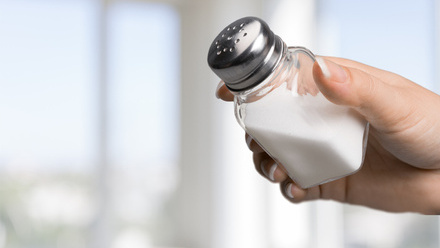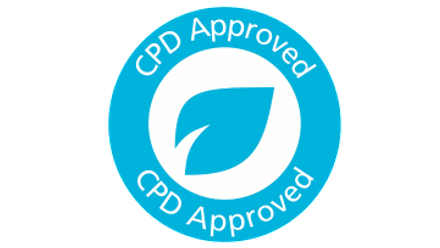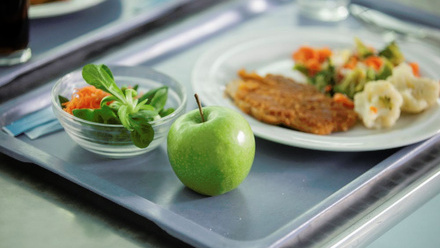BDA Older People Specialist Group committee members Jane McClinchy & Simone Roberts, Lecturers in Nutrition & Dietetics at the University of Hertfordshire, discuss nutrition and hydration and the multi-disciplinary team (MDT).
Nutrition and hydration and the MDT
In this piece, the nutrition and dietetics team from the University of Hertfordshire highlight the potential for placements ‘outside the norm’ and the importance of multidisciplinary working in delivering nutrition and hydration interventions.
Nutrition is everywhere - highlighting the potential for placement opportunities.
Dietetics is a wide and varied profession, and dietitians find themselves in many different roles from NHS professionals, product development, care homes, private sector, social care, and freelance roles. They work with individual patients as well as with other members of the MDT and organisations in delivering nutrition and hydration interventions and raising the awareness of nutrition and hydration. At the University of Hertfordshire, students can develop their skills in simulated settings and in care homes and community social settings where there may not be a dietitian present, as well as in the NHS across a range of settings and specialities. This piece highlights how we have developed first-year placements to enable students to see how nutrition and hydration are delivered first-hand. First-year student dietitians have an opportunity to undertake a placement in a non-medical setting to give them a wider understanding of the scope of the profession and provide them with an opportunity to build on first contact skills.
Placements are supported by simulation sessions, and we are joined by practising dietitians, on our inpatient wards at the University. Students can practice communication skills in a safe and supported space before meeting real patients in these simulations. Alongside the hospital beds and paraphernalia, background noises of patient machines all add to the realism of the ward setting and the addition of PPE has allowed students to experience some of the challenges faced due to the Covid-19 pandemic. We are adding alongside the ward experience an outpatient and community experience where students will be able to practice online and telephone consultations and have an opportunity to see how they appear to others via a video link. Technology has also opened an avenue to invite people to join students from as far away as Scotland. These virtual visits have allowed students to start building on their communication skills with people outside of their peer group and teaching team, to grow their confidence, and the bonus of regional variations in dietary intake.
Communication skills are one of the most important skills a dietitian has in building and maintaining professional relationships with our patients or service users. Active listening, paraphrasing, and questioning are skills we employ to build rapport and find ways to work collaboratively with those we support.
Having conversations around food is something we do naturally every day, as food is such a key part of our everyday lives but doing this in a clinical setting has its challenges.
Having the opportunity to speak with older people in their own homes, is a great way to build on combining communication skills and conversations around food. Spending time in residential care homes also allows students the opportunities to learn about some of the challenges older people may face with eating and drinking.
Students spend an extended time with those health care professionals directly responsible for the needs of older adults, working collaboratively and building professional relationships with the wider multi-disciplinary team.
These placements provide the time and space for students, some of whom have no previous experience working in a care setting, to spend time with a large demographic of our patients. Students in the past have had the opportunity to support older adults with eating and drinking, reminisce with residents and take part in some of the activities the care settings have to offer such as daily exercise and cake baking. Students have also supported care home chefs with food fortification and even used their experiences to make their own fortified milkshake recipe book. By seeing how other health care professionals work every day, ensuring that the nutritional needs of their patients are met, we hope will facilitate an understanding in the implementation of nutrition interventions. Indeed, the aim is also to facilitate and highlight nutrition and hydration awareness amongst health care professionals and how important it is to work with them as the piece below relating to hydration in older people identifies.
Whilst our NHS colleagues continue to be a vital part of training future dietitians, having alternative placements is a great opportunity to widen students’ skills at the start of the dietetic careers and provide a key opportunity to gain the foundation needed to be fantastic future dietitians.
Hydration is not just about water - How healthcare professionals can help!
While nutritional intake is important, fluid intake and achieving hydration is challenging for older people particularly. Indeed, identifying the specific fluid requirement and what contributes to fluid intake is not clear to many health care professionals. A perusal of guidance amongst colleagues ranging from 6-8 cups (1.2 litres) to 2 litres (1) to 3 litres (from the radiotherapists).
Despite a lack of clarity, at least the importance of hydration is recognised through the inclusion of water on the Eatwell Guide (2). There are however several barriers to full hydration for older people including fear of incontinence and simply not feeling thirsty. Having just a few drinks per day is not unusual and even when it is suggested that constipation may be related to fluid intake and cups of tea are offered the response is likely to be ‘I’ll be in the lavatory’ all day’ (3).
Health care professionals can all help by asking targeted questions and using the simple behaviour change approach of encouraging the inclusion of fluids to fit in with every day habitual behaviours that are sensitive to concerns about incontinence. They can also be reassuring about what fluids count towards intake and what foods are high in fluids. Simple suggestions are for example: finding out what is a preferred drink (4) as water and squash are often not finished, while hot milky drinks and fruit juices may be preferred. Also encouraging a drink in the morning at the start of the day (5,6) and encouraging high fluid content foods such as yoghurts and soups.
Dietitians are the only health care professionals with dedicated time learning about nutrition and hydration. By seeing how nutrition and hydration are implemented firsthand they will be able to hit the ground running in encouraging the multidisciplinary team in getting involved in facilitating nutrition and hydration in their patients.
References
1. BDA (2020) Fluid (water and drinks): Food Fact Sheet available from https://www.bda.uk.com/resource/fluid-water-drinks.html
2. PHE (2016) Eatwell Guide available from https://www.gov.uk/government/publications/the-eatwell-guide
3. Bhanu C, Avgerinou C, Kharicha K, Bauernfreund Y, Croker H, Liljas A, Rea J, Kirby-Barr M, Hopkins J, Walters K. 'I've never drunk very much water and I still don't, and I see no reason to do so': a qualitative study of the views of community-dwelling older people and carers on hydration in later life. Age Ageing. 2019 Dec 1;49(1):111-118. doi: 10.1093/ageing/afz141. PMID: 31819953; PMCID: PMC6911653.
4. Volkert, D et al.(20190 ESPEN guideline on clinical nutrition and hydration in geriatrics, Clinical Nutrition, Volume 38, Issue 1, 10 - 47
5. Bunn D et al (2019) Effective hydration care for older people living in care homes. Nursing Times [online]; 115: 9, 54-58.
6. Bunn, D., Jimoh, F., Wilsher, S. H., & Hooper, L. (2015). Increasing Fluid Intake and Reducing Dehydration Risk in Older People Living in Long-Term Care: A Systematic Review. Journal of the American Medical Directors Association, 16(2), 101-113. Retrieved from https://www.sciencedirect.com/science/article/pii/S152586101400694X. doi:https://doi.org/10.1016/j.jamda.2014.10.016







